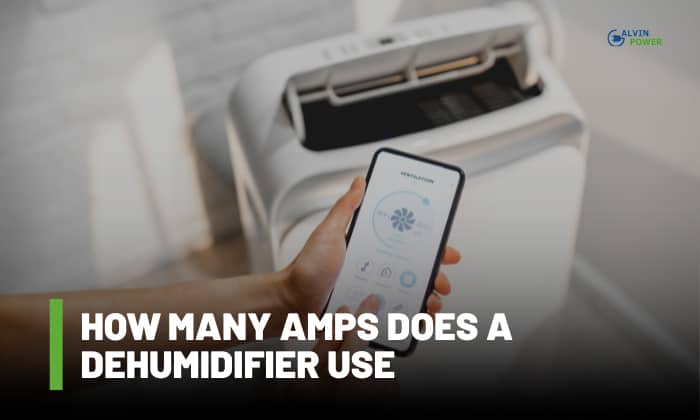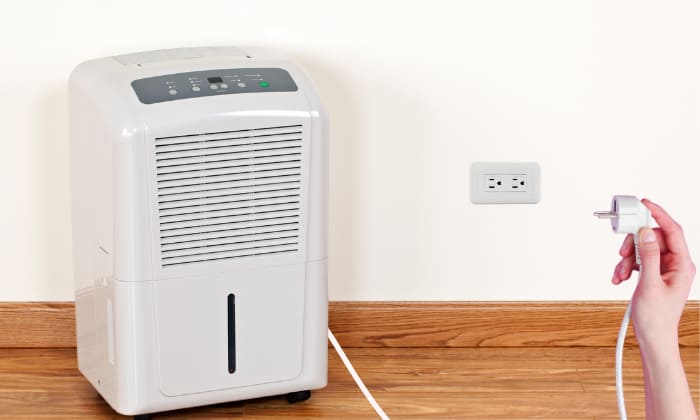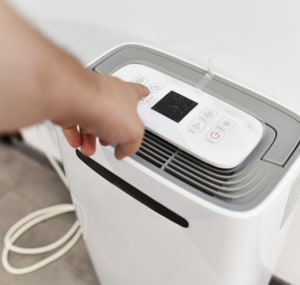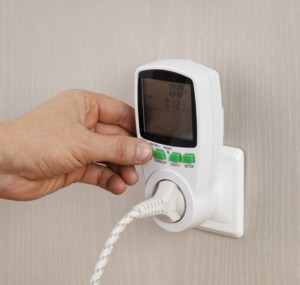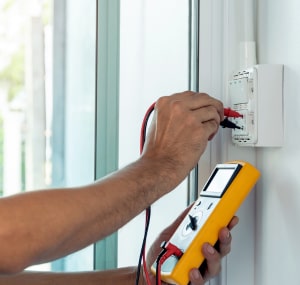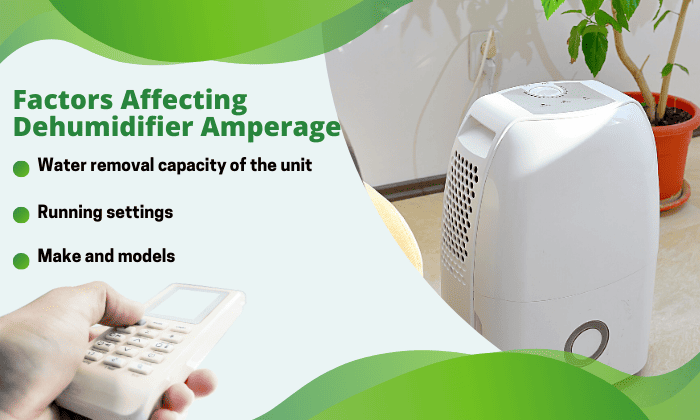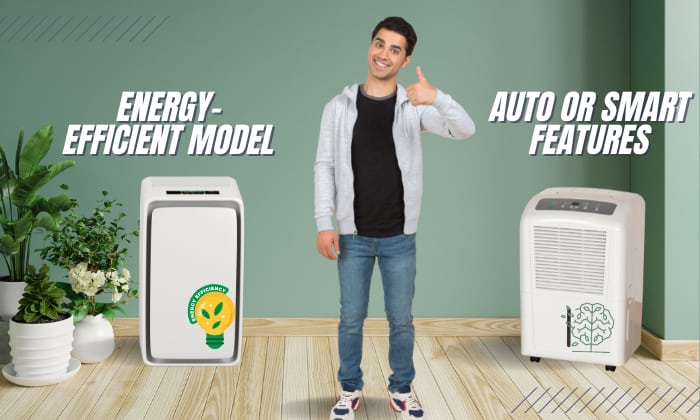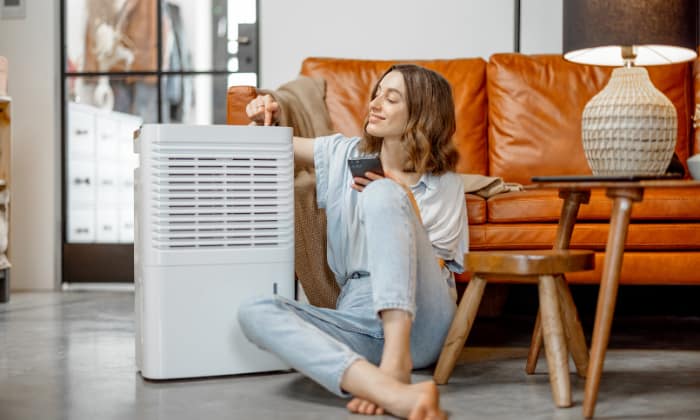Dehumidifiers enhance the comfort we feel at home by maintaining ambient humidity. They pull moisture from the air and collect it in a container in exchange for some electricity.
Being an appliance we regularly use in our homes; dehumidifiers have certain current operating requirements. It’s advisable that homeowners know the exact power consumption levels of the devices to plan the house circuit and prevent electrical hazards.
So, how many amps does a dehumidifier use? Dehumidifiers can draw a running current of around 2.2 amps to 13.2 amps, depending on their water removal capability, brands, models, and more. They also draw more current upon startup.
Table of Contents
Amp and Watt Requirements of Different Dehumidifiers
A dehumidifier can be plugged into a normal household outlet with a 15 or 20-amp circuit at 120 volts in the United States.
Generally, the amperage draw will depend on the dehumidifier’s water removal capacity. The more water it can extract from the air, the higher the power requirements and, thus, the higher the dehumidifier amp draw.
1. Operating or running current
We’ve looked at some compact and portable dehumidifiers and summarized their required currents to operate. We’ve also listed how many watts each model draws at their respective water removal capacities:
|
A compact or portable dehumidifier running current |
||
| Water removal capacity (pints per day) | Electric power (watts) | Running current (amps) |
| 20 – 22 | 250 – 260 | 2.2 – 3.5 |
| 30 – 35 | 295 – 450 | 2.8 – 4.2 |
| 40 – 45 | 395 – 525 | 3.8 – 5.4 |
| 50 | 520 – 550 | 4.7 – 7.0 |
| 60 – 65 | 550 – 710 | 4.9 – 6.7 |
| 70 | 580 – 727 | 5.1 – 7.5 |
We also like to mention some dehumidifiers that we found from Santa Fe Indoor Air Quality Solutions. These are whole-house dehumidifiers with high capacities. One of these even needs a 20 amp circuit and can be used as a commercial dehumidifier:
|
High-capacity whole-house dehumidifier running current |
||
| Water removal capacity (pints per day) | Electric power (watts) | Running current (amps) |
| 121 | 840 | 7.3 |
| 155 | 920 | 8.0 |
| 205 | 1525 | 13.2 |
2. Startup amps
Since dehumidifiers function with a compressor to remove moisture from the air, they may draw startup currents higher than their operating or running currents.
Here is a summary of some startup currents we found up to a 70-pint dehumidifier. Take note that not every dehumidifier manufacturer publishes its products’ startup amps:
|
Water removal capacity (pints per day) |
Startup current (amps) |
| 20 – 22 | 13 |
| 30 – 35 | 9.6 – 19.4 |
| 40 – 45 | 9.6 – 21 |
| 50 | 10.8 – 27 |
| 60 – 65 | 14.2 |
| 70 | 17.25 – 33 |
How to Determine the Amps of a Dehumidifier
1. Read the manufacturer’s specifications
A lot of suppliers provide the estimated running current of the devices. This specification can be found on the devices’ manuals or on the manufacturer’s website.
However, these values are just for reference only. Manufacturers test and record the numbers in controlled environments, plus, the current draw can vary based on their running settings and fan speeds.
2. Use a power meter
A cheap way to measure your current draw in real time is through the use of a power meter. It’s a device that is plugged into the outlet along with your dehumidifier or any appliance. It shows how much electricity flows to your dehumidifier as well as the dehumidifier watts.
3. Use a current clamp meter or a multimeter
If you want to be more accurate in your measurement, you can use a multimeter. It has probes that can measure the accurate flow of electricity to your device.
You can also get a current clamp meter. This detects the magnetic field around a current-carrying wire and measures the current.
Factors Affecting Dehumidifier Amperage
1. Water removal capacity of the unit
Generally, a high-capacity dehumidifier has a higher power rating than a low capacity one. A larger dehumidifier needs more powerful compressors to draw out more moisture from the air. A low-wattage dehumidifier will draw less current.
2. Running settings
Dehumidifiers can be set to low, medium, or high. Of course, running a dehumidifier on its high setting will draw more current compared to medium and low settings.
3. Make and models
The power ratings of dehumidifiers also vary based on the brands and models. Each manufacturer adds their own tweaks to optimize the performance of their products. One that utilizes newer, more efficient technology can draw significantly less power from the wall compared to one made years ago.
Additionally, the appliance model affects energy consumption as well. A brand’s flagship lineup often brings the strongest performance thanks to the implementation of the latest technology. However, it will cost a pretty penny.
Cost to Use a Dehumidifier
We can get the cost to run dehumidifier using its energy consumption in kilowatt-hours (kWh) and the cost of electricity ($ per h). The computation usually looks like this:
\[
\text{Cost } (\$) = \text{energy } (\text{kWh}) \times \text{cost } (\$ \text{ per kWh})
\]
Energy in kWh can be determined by simply multiplying the power in watts and the number of hours the dehumidifier is running divided by 1000. Our new equation would look like this:
\[ \text{Cost (\$)} = \left(\frac{{\text{power}}}{{1000 \, \text{kilowatts}}}\right) \times \text{time hour} \times \text{cost (\$ per kWh)} \]
Let’s say you want to know how much it would cost if you run a dehumidifier 24 hours a day. If you have a 50 pint/day dehumidifier with an estimated power of 520 watts and the average cost of electricity in the US is $0.166 per kWh (as of March 2023), then the total cost for 24 hours will be:
The cost you incur might vary depending on the cost of electricity in your area and the actual energy use of the dehumidifier. If you measured the current using a power meter, a multimeter, or a current clamp, then the power would simply be the measured current multiplied by the outlet’s voltage.
Here is a table of estimated costs of running a dehumidifier based on how long they are running. Take note that these values assume that they run at maximum setting without turning on and off.
| Running time |
Cost of running the dehumidifiers at $0.166 per kWh |
|||||
| 20-22 pints/day | 30-35 pints/day | 40-45 pints/day | 50 pints/day | 60-65 pints/day | 70 pints/day | |
| 1 hour | $0.04 | $0.07 | $0.09 | $0.09 | $0.12 | $0.12 |
| 12 hours | $0.52 | $0.90 | $1.05 | $1.10 | $1.41 | $1.45 |
| 1 day (24 hours) | $1.04 | $1.79 | $2.09 | $2.19 | $2.83 | $2.90 |
| 1 week (7 days) | $7.25 | $12.55 | $14.64 | $15.34 | $19.80 | $20.27 |
| 1 month (30 days) | $31.08 | $53.78 | $62.75 | $65.74 | $84.86 | $86.89 |
Tips for Reducing Dehumidifiers’ Energy Usage
1. Use an energy-efficient model
An energy-efficient dehumidifier will have lesser electricity use for the same water-removing capacity. Energy efficient products are commonly rated with Energy Star and can be 13% more efficient than those with no rating.
Also, replacing your old dehumidifier with a new one can help you save some bucks, especially during cold weather. An old dehumidifier can have ice buildup instead of dripping into the collecting container. What’s worse is that the water can simply just evaporate back.
2. Use a dehumidifier with auto or smart features
A lot of dehumidifiers can automatically turn on and off based on its set humidity by using their “Auto” functions. Some even have smart functions that turn on and off on at set times. Utilizing these features can reduce how much electricity is consumed.
Frequently Asked Questions
Do Dehumidifiers Draw a Lot of Power Compared to Other Devices?
Newer dehumidifiers have modest power use. Dehumidifiers operate like small air conditioners. They collect water from the air using a compressor and a coolant to condense water vapor in the room.
Larger dehumidifiers can be comparable to 5000 BTU window air conditioners in terms of power consumption. 5000 BTU air conditioners have an average power rating of 450 – 500 watts, while our 50 pint/day dehumidifier can have a rating between 520 – 550 watts from our table.
Here is a chart comparing a 50-pint/day dehumidifier with other household appliances in terms of power:
Does a Dehumidifier Need Its Own Circuit?
No, dehumidifiers do not need their own circuit. Based on our table, a 70-pint/day dehumidifier has a running current of up to 7.5 amps, which is far from the 80% limit for 15-amp or 20-amp circuits (12 amps for a 15-amp circuit and 16 amps for the 20-amp circuit).
Other appliances can still be plugged in with the dehumidifier as long as the 80% limit is not exceeded.
Is it Possible to Leave the Dehumidifier Running All Night?
Yes, you can run a dehumidifier all night, especially if you use a dehumidifier that has auto or smart features that turn off once the room reaches the desired humidity. Just be aware of the cost of running the dehumidifier for 12 hours overnight.
Conclusion
Dehumidifiers draw current generally based on their water removal capacities up to 13.2 amps. Starting amps can be high, but it quickly goes down to the running amps.
While our tables can give you an estimate of the cost of operating the dehumidifier, measuring exactly how many amps does a dehumidifier use may take some tools and know-how. Learning how much current your home appliances draw will help design the house’s electricity circuit as well as monitor the overall power consumption.

I am Edwin Jones, in charge of designing content for Galvinpower. I aspire to use my experiences in marketing to create reliable and necessary information to help our readers. It has been fun to work with Andrew and apply his incredible knowledge to our content.

